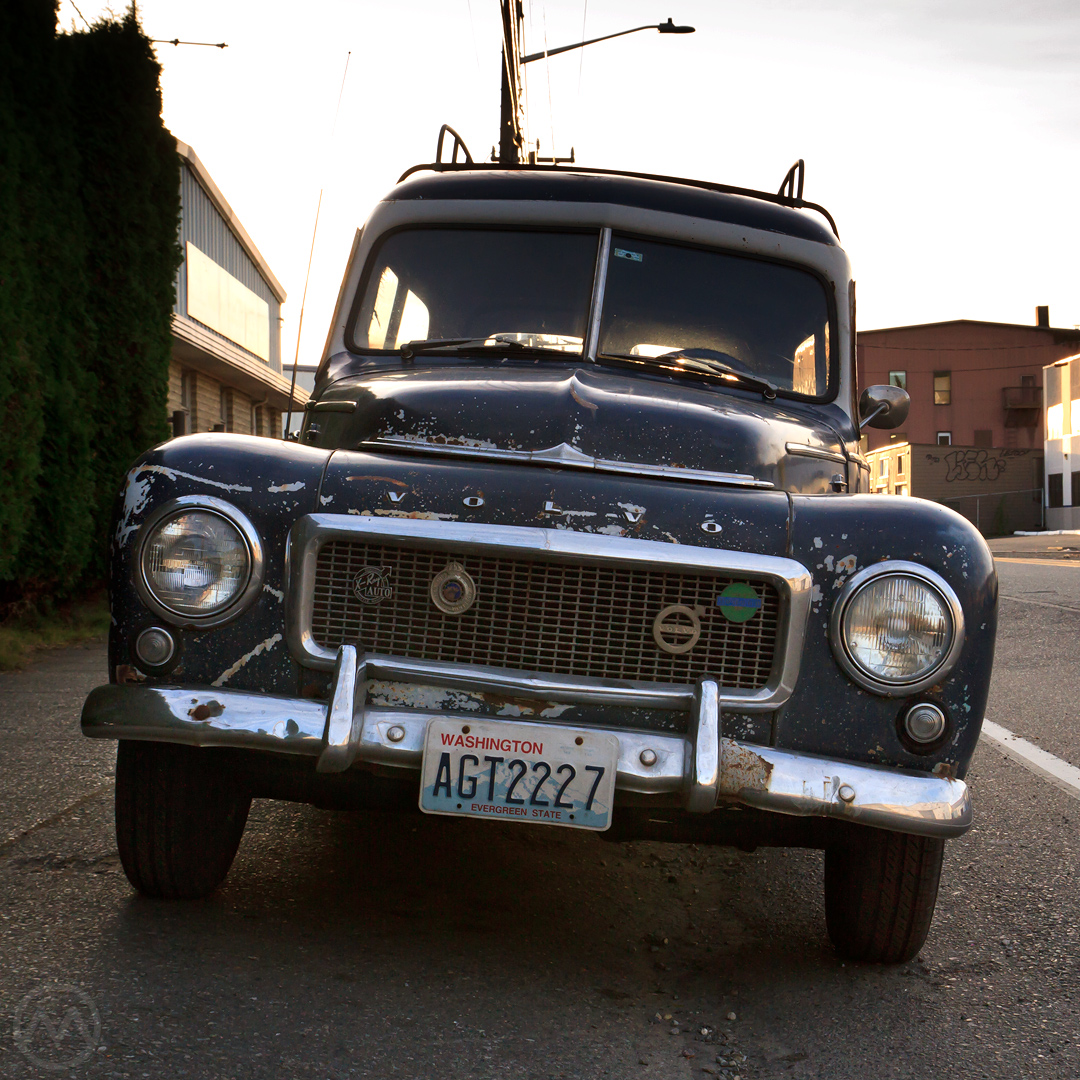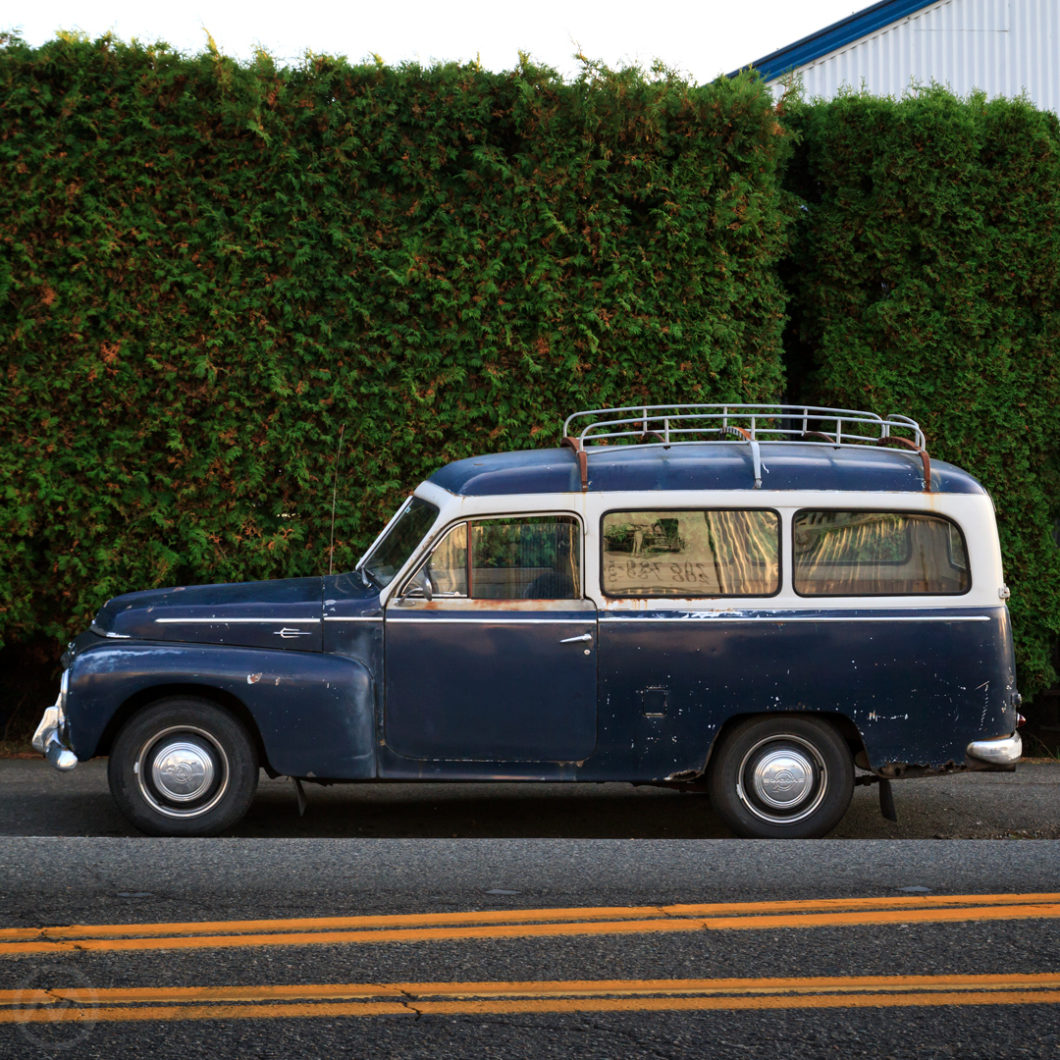At first glance the Volvo Duett looks like a simple wagon version of the Swedish automaker’s PV444 and 544, but under the skin it’s a very different story. The 444 was a radically advanced car when it was created, in part because it was a light and strong unibody. But revolutionary ideas sometimes have unintended consequences.
Many early manufacturers of unibody cars, particularly Hudson, found out that were rather hemmed in by the decision once they had taken the plunge. Unitized construction, in which the body shell is the frame itself, makes cars more rigid, lighter, and quieter, but it’s also more limiting in how many types of bodies can be built and how often they can be substantively changed. It just costs more to make multiple unibody styles than to make conventional bodies that sit on a frame.
In the 1940s, the idea was still fairly new, and Volvo’s 444 was created during the war for an environment of predicted austerity. Making it lighter, smaller, and more frugal than previous Volvos (many of which were basically scaled-down American cars) was a priority. But after the war, there were more niches that Volvo wanted to cover, and it was hard to alter the 444 to suit without greatly increasing the price.
Volvo’s answer to the quandary of what to do about additional bodies was to take an evolutionary step backward. The Duett shares the 444’s basic styling, front clip, engines, and front suspension; but underneath it’s a conventional body-on-frame machine.
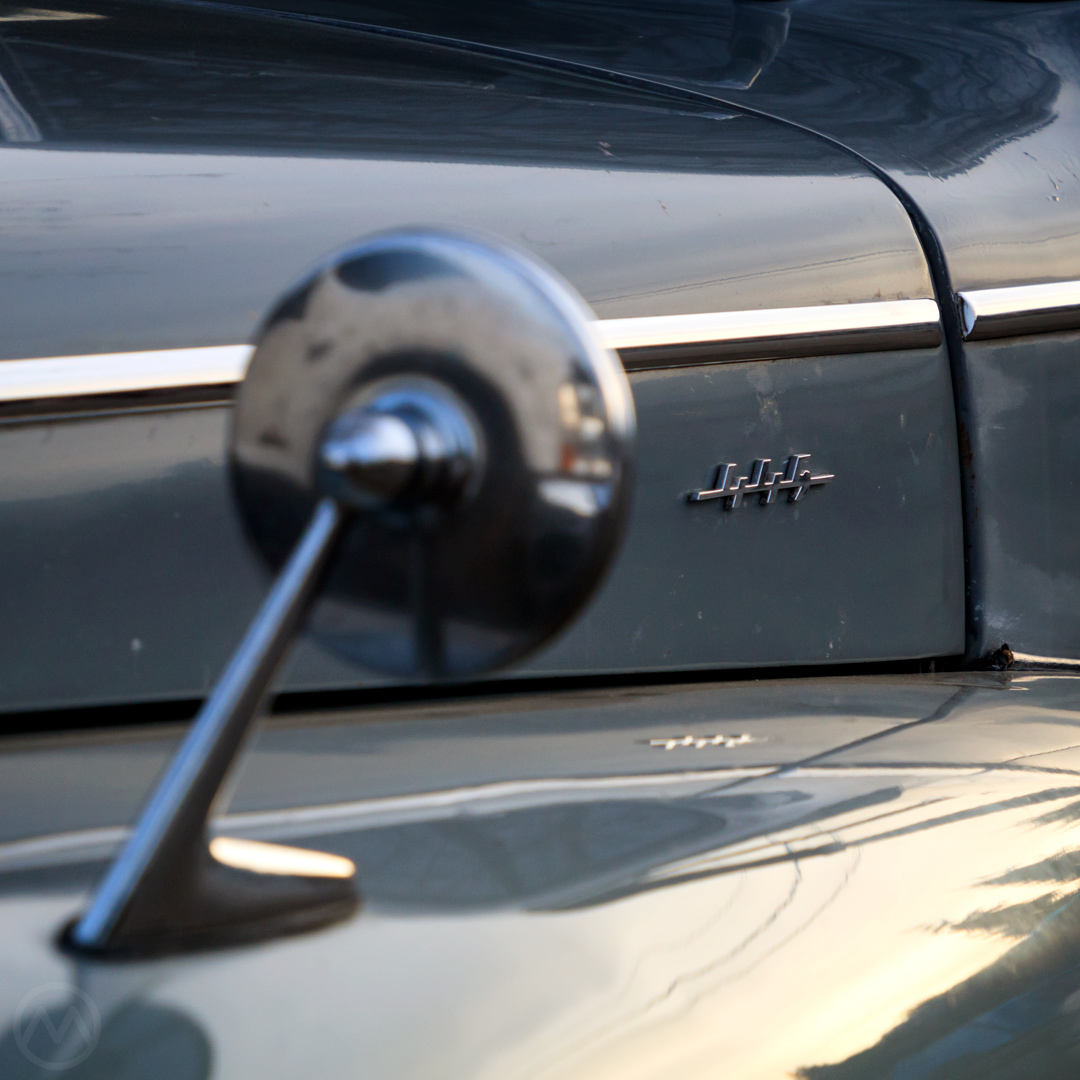
The Duett did not bow until 1953, but the body-on-frame configuration came earlier. Called the Volvo 445, it was at first available as a blank canvas chassis for specialist bodies. When Göteborg noticed that many of these bodies were being used for family wagons, it decided to get in on the action.
Creating the Volvo 444
A spinoff of Swedish ball bearing manufacturer SKF, Volvo cars was started on the initiative of SKF’s sales boss Assar Gabrielsson and an engineer friend he’d made in the early 1920s, Gustaf Larson. The project dated back to 1922, but Volvo only became a company in 1926 after SKF’s upper management was convinced by the prototype Gabrielsson had paid for on the down-low, designed by Larson and others including Jan Smith.
The goal of Volvo was twofold. First, to generate a larger industrial base in Sweden that SKF could take advantage of and build economies of scale to keep even with European firms, and second to build cars that were well-suited to Sweden. Turns out, Sweden really liked American cars, and all Volvos from the original ÖV4 right through WW2 were heavily influenced by GM, Ford, and other American brands in size and style.
Those prewar Volvos are characterful cars, but they were expensive and built in small numbers. As early as 1937 Volvo contemplated making something more proletarian, but it took the dramatic shift in circumstances of the war to make that a real imperative. The postwar climate would be one of austerity but it would also need more vehicles, and those vehicles represented a chance to move beyond the niche, expensive cars Volvo was already building.
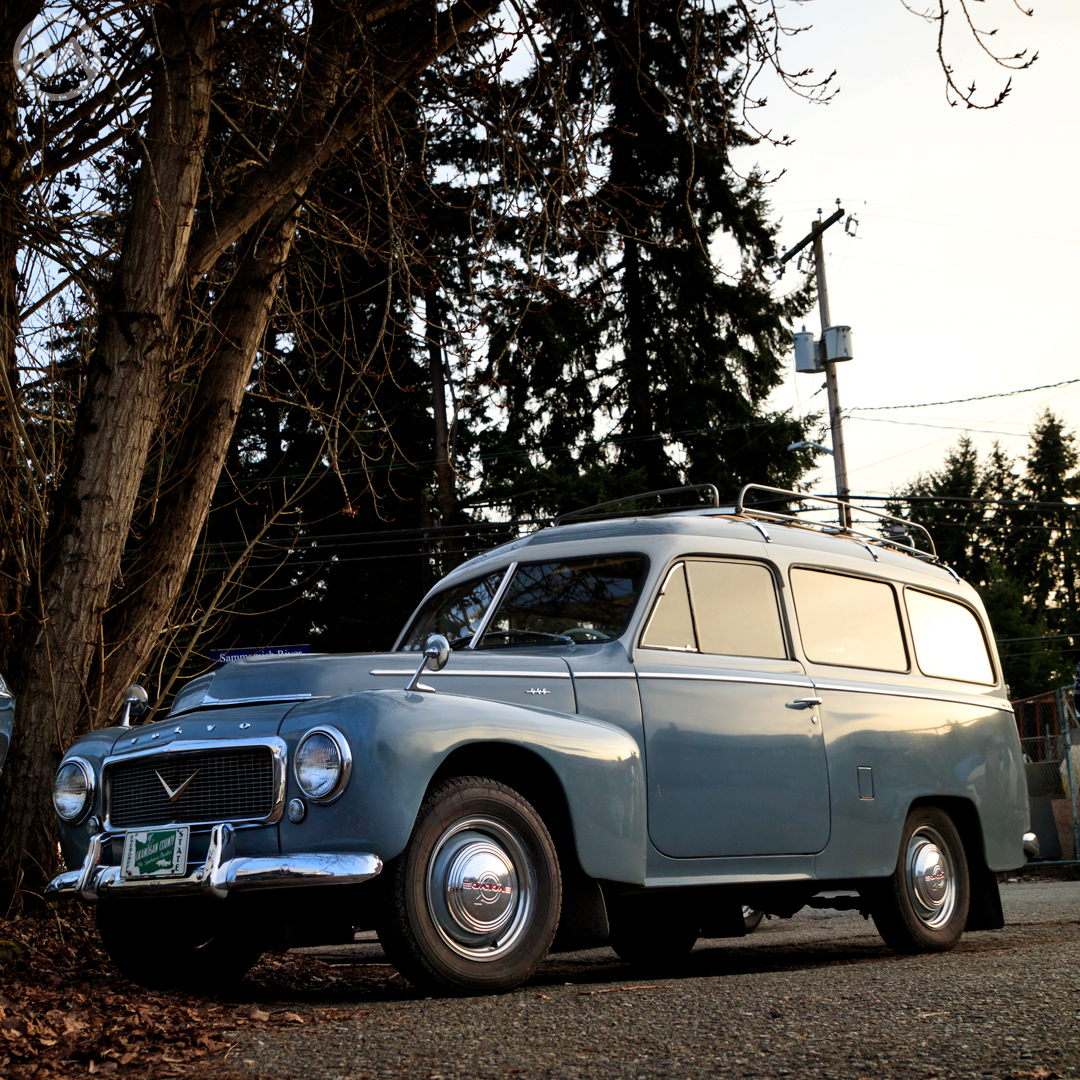
In 1941-42, Volvo engineers Carl Lindblom and Olle Schjolin created Volvo’s first prototype small car, but that awkward design didn’t suit management. Around that time former motorcycle racer Helmer Petterson came onboard at Volvo. Petterson had worked for Excelsior Motorcycle in America but returned to Sweden and worked managing factories and car dealerships before joining the company.
Petterson proposed something entirely different than the earlier prototype, a more modern-looking car inspired by the German Hanomag 1.3 liter, and this time Gabrielsson and Larson liked the idea.
Petterson experimented with designing a front-drive version of the car a-la DKW’s F8, and the Hanomag’s unibody shell was deconstructed and heavily scrutinized. One idea made it, the other didn’t. Front-wheel drive was still a very new idea in the 1940s even if companies like Adler, DKW, and Cord had already gotten there, and Volvo didn’t think it could get components reliable enough to make it work. But the unibody shell? That was a go.
What became the PV444 (4 Seater, 40 Horsepower, 4-cylinder) looked like a blend of the Hanomag and the 1941-42 Fords. Though Pettersen led the project, the chassis team was led by Sven Wilberg and the body design by ex-Studebaker man Edward Lindbergh. Engineer and designer Erik Jern contributed in many areas as well. The engine, Volvo’s 1,414-cc B4B, was also brand new.
The 444 preserved many of the best aspects of the light and lithe Hanomag but was bigger and tougher. It was modest, but a good handler. Production began in early 1947 after two years of testing, and it proved an immediate hit.
The Volvo PV445 and Duett
Volvo’s “peacetime car” was very successful at home, and eventually it achieved the second part of its mission, which was establishing Volvo as an international brand in other markets. A tiny number of Volvo’s big prewar products had been sold in mainland Europe, but the PV444 represented a real mainstream machine that gave the Swedes a toehold in other countries.
What it did not do, however, was address the need for anything except a two-door sedan. Older Volvos, including the still-in-production PV61 (which looked much like a downsized 1939 Pontiac), were all body-on frame. While they were designed as luxurious cars, they were often also used as the basis for coachbuilt trucks and vans, which were in heavy demand postwar.
Though exotic Delahayes and Duesenbergs come to mind when we hear the word “coachbuilt” today, many European trucks and vans were built that way before 1960.
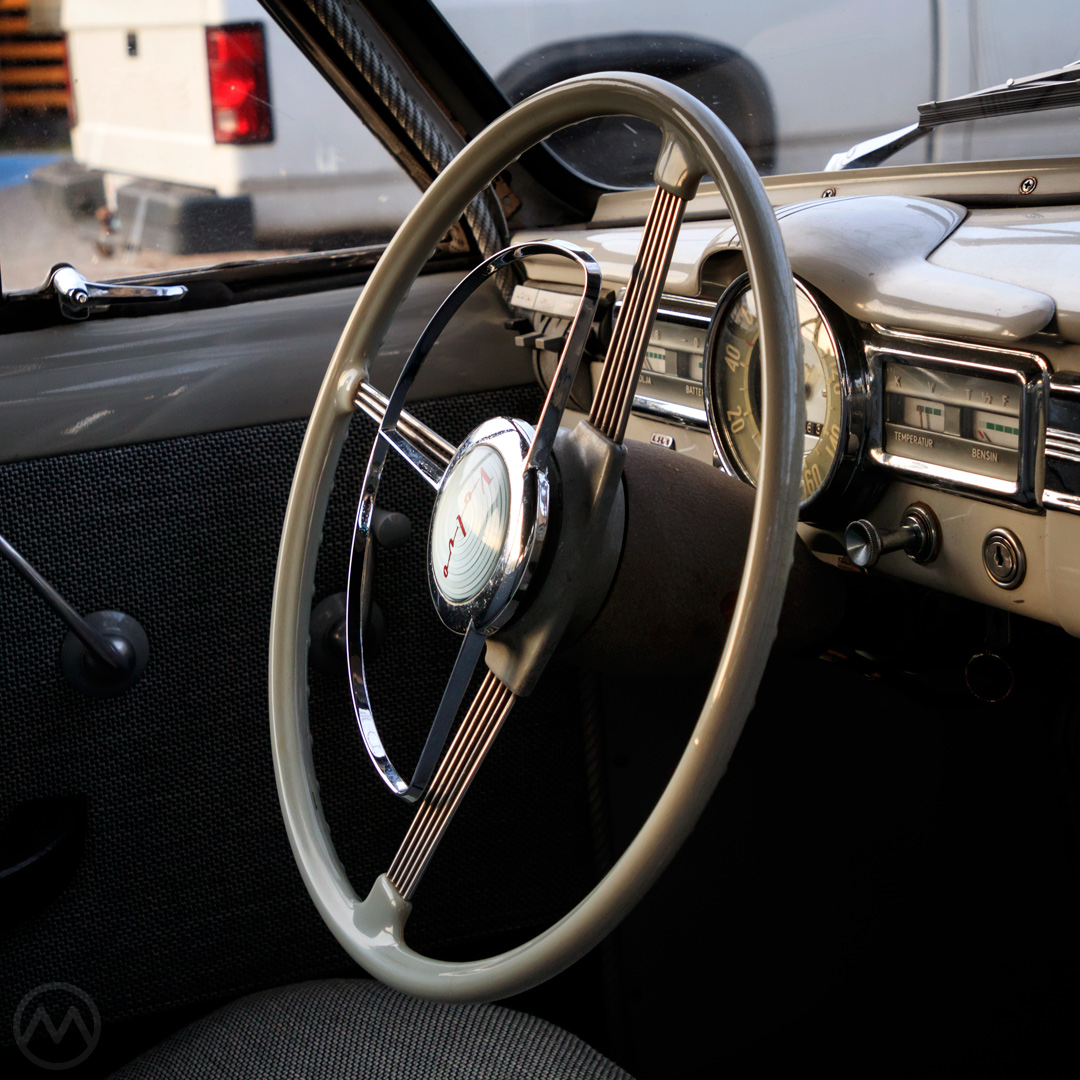
The 444 could not be easily modified into such a vehicle or used by coachbuilders without making it far heavier or much more expensive to produce, so Volvo decided to scale down it’s traditional frame design and build a bare-chassis product based on the 444, which became the PV445.
Forward of the A-pillar all the components were shared with the PV444, but they were mounted to a new conventional chassis that used rear leaf springs for coping with heavy loads. The PV445 arrived in 1949 and was soon the darling of Swedish coachbuilders like Valbo Karosserifabrik, Grip of Västervik, and Nordbergs Vagnfabrik.
Most of these builders produced vans, pickups, ambulances, and other utility vehicles but a few produced gorgeous convertibles that looked just like a scaled-down ‘47 Ford, and eventually most turned out station wagon or estate versions for families who needed more room than the PV444 could provide but couldn’t spring for the much more expensive full-size Volvos.
It did not take Volvo very long to notice how many of these vehicles were appearing on Swedish roads, and in 1951-52, it decided to get into the action itself. Instead of just building a bare-chassis PV445, it would build its own wagon, which became the PV445 Duett.

Duett P110 and P210
Volvo unveiled its home-grown wagon in 1953. The Duett name stemmed from its theoretical dual purpose concept, a “duet” of family and work use. This was a very popular idea at the time, and just months later England’s Rootes Group unveiled the tiny Hillman Husky aimed at the exact same type of buyer.
The Husky and vehicles like it, including Renault’s ancient Juvaquatre van, were smaller than the Duett, however. The sturdy chassis and leaf springs could really handle commercial loads, and the Duett’s huge interior, raised roof, and externally-hinged Dutch doors were created with a nod to real commercial use.
For a big family, an interior of up to seven seats could be specified, though like modern three-row vehicles, some seats were for small fries. The rear floor was varnished wood to move boxes around easily on, and there were optional roof racks for even more cargo as seen on both of our pictured cars.
In profile, the Duett looked remarkably like a tiny Chevrolet Suburban and to modern eyes it looks almost SUV like. It could, possibly, be considered an ancestor of the crossover, except that this was a car that became conventionally truck-like rather than a truck-ish looking vehicle designed to drive like a car.

The original design code for the first Duett was P110, and it used PV444 components wherever possible to cut down on costs. It was popular from the start in Sweden if more specialized than the 444. Much of the design work for the PV445 and Duett were done by the very same team that had created the 444, though there was one notable addition. One of designer Jan Wilsgaard’s first jobs at Volvo, in 1950, was designing the windows for the Duett.
Wilsgaard’s subsequent projects were much more ambitious, including 1956’s Amazon, but around the time that car was coming to market Volvo were also launching their cars in the biggest market yet: the United States.
U.S. Volvo sales officially began that year, though a few earlier cars had trickled in earlier. The first two products offered were the proven PV444 and PV445 Duett. Their styling was a decade out of date, but the hard-wearing and utilitarian virtues of the 445 Duett were just as well liked as the excellent handling and reliability of the 444. Both earned an enviable rep for quality.
Fitting twin SU carburetors to the B4B engine morphed it into the 70-horsepower B14, the standard powerplant for the 444 and Duett into the mid-1950s, but by the time the cars came stateside the main engine was the bored-out B16 engine, 1,583-cc now and 81 horsepower, better for load lugging in the Duett and better for racing in the 444.
The Duetts pictured here, aside from the one shot of the later P210 series, are fairly early U.S. imports from 1957. The 444 gave way to the lightly updated 544 in 1958, with more power and a one-piece windshield, and the Duett got a similar update for 1960, morphing into the P210 series. The later P210 cars eventually used the larger 1,778-cc B18 engine.
There were also van versions with windows and without, though they were rarely seen outside of Sweden. The 444 and 445 were Volvo’s first internationally successful cars, and offering such a handy wagon, with few direct competitors, was a big part of why.
The P210 Duett was the last body-on-frame Volvo, as the subsequent Amazon and 140-series were built in ever larger numbers, making a full-chassis variation unlikely and unnecessary. When production finally wound down in 1969, it was replaced by a special high-roof version of the 100-series cars, called the 145 Express. By then, Volvo wagons were familiar worldwide.
We captured the grey-and-white PV445 Duett seen here in 2021, the dark blue car back in 2015, and the P210 in 2018.
